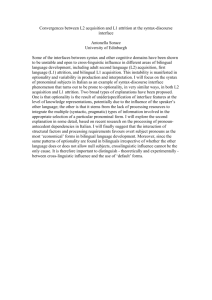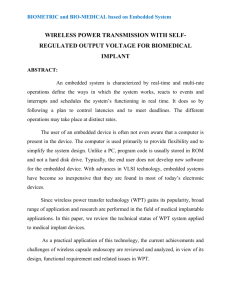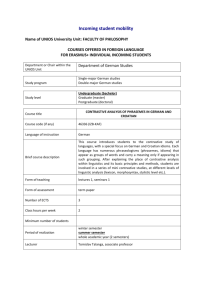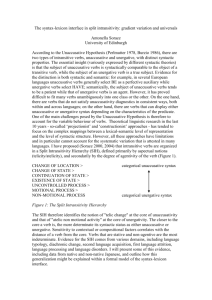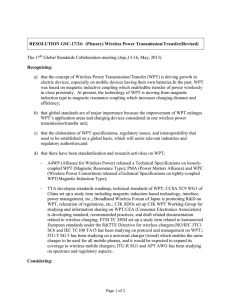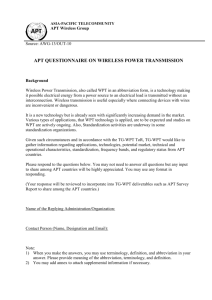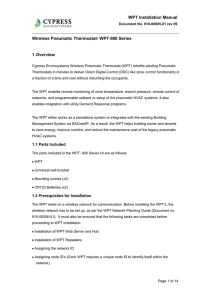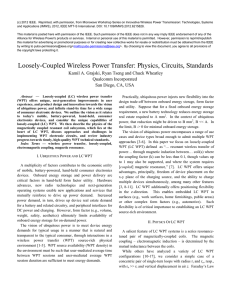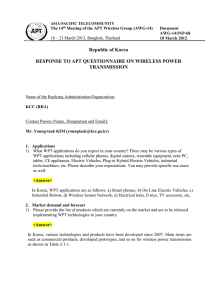Submited paper
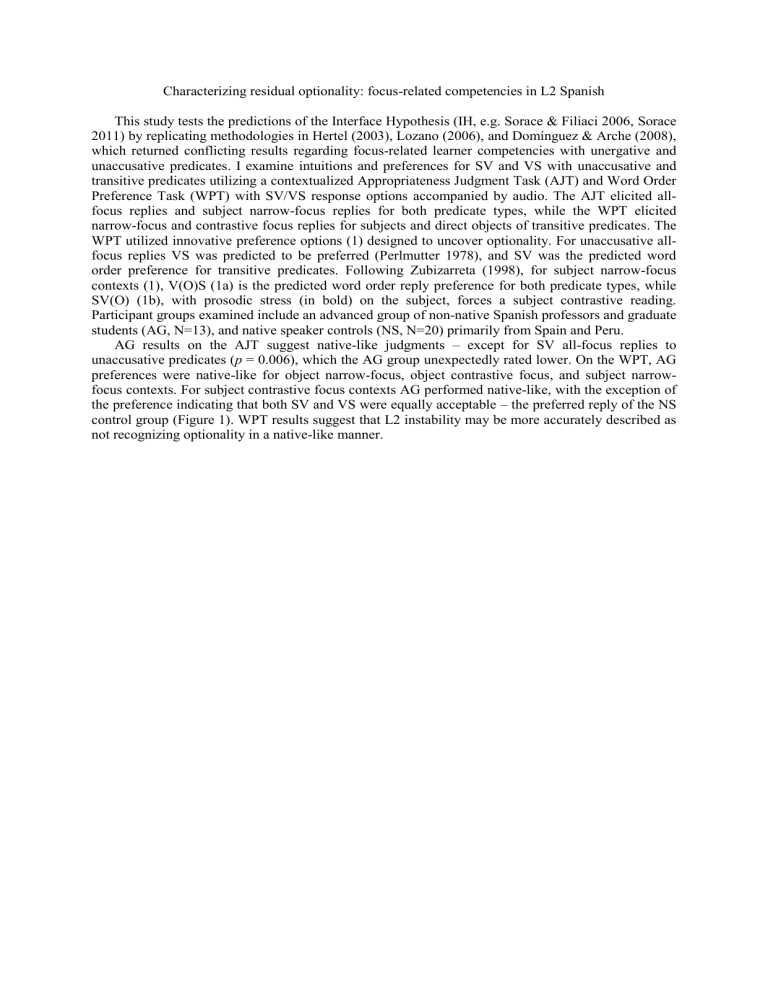
Characterizing residual optionality: focus-related competencies in L2 Spanish
This study tests the predictions of the Interface Hypothesis (IH, e.g. Sorace & Filiaci 2006, Sorace
2011) by replicating methodologies in Hertel (2003), Lozano (2006), and Domínguez & Arche (2008), which returned conflicting results regarding focus-related learner competencies with unergative and unaccusative predicates. I examine intuitions and preferences for SV and VS with unaccusative and transitive predicates utilizing a contextualized Appropriateness Judgment Task (AJT) and Word Order
Preference Task (WPT) with SV/VS response options accompanied by audio. The AJT elicited allfocus replies and subject narrow-focus replies for both predicate types, while the WPT elicited narrow-focus and contrastive focus replies for subjects and direct objects of transitive predicates. The
WPT utilized innovative preference options (1) designed to uncover optionality. For unaccusative allfocus replies VS was predicted to be preferred (Perlmutter 1978), and SV was the predicted word order preference for transitive predicates. Following Zubizarreta (1998), for subject narrow-focus contexts (1), V(O)S (1a) is the predicted word order reply preference for both predicate types, while
SV(O) (1b), with prosodic stress (in bold) on the subject, forces a subject contrastive reading.
Participant groups examined include an advanced group of non-native Spanish professors and graduate students (AG, N=13), and native speaker controls (NS, N=20) primarily from Spain and Peru.
AG results on the AJT suggest native-like judgments – except for SV all-focus replies to unaccusative predicates ( p = 0.006), which the AG group unexpectedly rated lower. On the WPT, AG preferences were native-like for object narrow-focus, object contrastive focus, and subject narrowfocus contexts. For subject contrastive focus contexts AG performed native-like, with the exception of the preference indicating that both SV and VS were equally acceptable – the preferred reply of the NS control group (Figure 1). WPT results suggest that L2 instability may be more accurately described as not recognizing optionality in a native-like manner.
Examples and figures
1. Who ate the apple?
a. Comió la manzana Juan. b. Juan comió la manzana.
Subject contrastive focus
SV=VS word order
0,8
0,6
0,4
0,2
0
Figure 1.
AGG NS
WPT Preference proportion with
Wilson 95% c.i.
Selected references
Bley-Vroman, Robert. 1983. The comparative fallacy in interlanguage studies: The case of systematicity. Language Learning 33 , 1–17.
Domínguez, Laura & María J. Arche. 2008. Optionality in L2 grammars: the acquisition of SV/VS contrast in Spanish. BUCLD 32 Proceedings, 96-107. Somerville, MA: Cascadilla Press.
Gupton, Timothy & Tania Leal Méndez. 2013. Experimental Methodologies: Two Case Studies
Investigating the Syntax-Discourse Interface. Studies in Hispanic & Lusophone Linguistics 6(1),
139-164.
Hertel, Tammy. 2003. Lexical and discourse factors in the second language acquisition of Spanish word order. Second Language Research 19(4), 273-304.
Hoot, Bradley. 2012. Presentational Focus in Heritage and Monolingual Spanish. Chicago: University of Illinois dissertation.
Lozano, Cristobal. 2006. Focus and Split intransitivity: the acquisition of Word order alternations in non-native Spanish. Second Language Research 22(2), 145-187.
Ortega, Lourdes. 2013. SLA for the 21st Century: Disciplinary Progress, Transdisciplinary Relevance, and the Bi/multilingual Turn. Language Learning 63(1), 1-24.
Perlmutter, David. 1978. Impersonal Passives and the Unaccusative Hypothesis. Proceedings of the
4th Annual Meeting of the Berkeley Linguistics Society , 157-190.
Sorace, Antonella and Francesca Filiaci. 2006. Anaphora resolution in near-native speakers of Italian.
Second Language Research 22. 339-368.
Sorace, Antonella. 2011. Pinning down the concept of “interface” in bilingualism.
Linguistic
Approaches to Bilingualism 1(1), 1-34.
Zubizarreta, María Luisa. 1998.
Prosody, focus, and word order. Cambridge: MIT Press.
